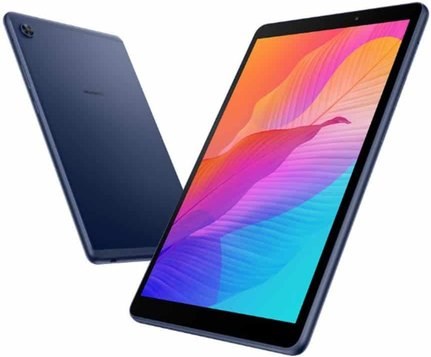

Software Environment:
PlatformThe family of the operating system like Android, iOS, Windows Phone/Mobile, Palm OS, etc. Android
Operating SystemPre-installed (usually embedded) operating system which the device was released with. Google Android 10 (Q)Google Android 10 (Q)
EMUI 10.0.1Subversion, update version, user interface, defualt language, etc.
Application processor, ChipsetApplication processor, Chipset:
CPU ClockFrequency of the square signal which schedules the internal operation of microprocessor (synchronous sequential logic). The current consumed by the processor is approximately proportional to clock rate. 2000 MHz
CPUManufacturer part number and most important characteristics of the IC which includes the main application processor or processors MediaTek MT8768, 2020, 64 bit, quad-core, IMG PowerVR GE8320 GPUMediaTek MT8768, 2020, 64 bit, quad-core, IMG PowerVR GE8320 GPU
Operative MemoryOperative Memory:
RAM TypeType of volatile memory IC which specifies RAM architecture, timing characteristics, refresh mode, voltage levels and physical design of the IC. Two major types of random-access memory is static RAM (SRAM) periodically refreshed dynamic RAM (DRAM). LPDDR3 SDRAM
RAM Capacity (converted)RAM capacity in binary bytes (KiB: 1024 bytes, MiB: 1024 KiB, GiB: 1024 MiB) 3.00 GiB RAM
Non-volatile MemoryNon-volatile Memory:
Non-volatile Memory Capacity (converted)The value of ROM capacity converted to the most appropriate units (KiB: 1024 bytes, KB: 1000 bytes, MiB: 1024 KiB, MB: 1000 KB, GiB: 1024 MiB, GB: 1000 MB) 32.0 GB ROM
DisplayDisplayAll parameters that related to display
Display DiagonalThe distance measured between the furthest corners of the display. In case of display with rounded edges this refers to the diagonal of the smallest bounding rectangle. 203.2 mm
8 inchDisplay Diagonal in inches
ResolutionHorizontal and vertical resolution of the primary display. In case of display with rounded edges this refers to the smallest bounding rectangle. 800x1280
Horizontal Full Bezel WidthDefined as the sum of width of left and right vertical display bezels. If the display panel is located in the middle width of left and right bezels are the same and their width is the half of the full bezel width. 13.4 mm
Display Area UtilizationRegular display area per regular front panel area ratio. This approximated indicator does not count with possible rounded corners (neither on front panel nor on display) or display notches, holes. 76.7%
Pixel DensityIndicates the number of pixels per inch 189 PPI
Display TypeDisplay technology, e.g. Color/ monochrome e-ink, STN, PM-OLED, AM-OLED, TN-TFT, IPS TFT, ASV TFT, MVA TFT, PVA TFT, PLS TFT Color IPS TFT LCDColor IPS-TFT (In-Plane Switching - Thin Film Transistor) is also called Super TFT LCD. This is an active matrix LCD technology developed by Hitachi Ltd. in 1996. display
Number of Display ScalesMaximal number of displayable colors or scales 16.8M
Scratch Resistant ScreenUsual types: Gorilla Glass generations, DragonTrail/X, Sapphire Glass Yes
Collapse datasheetExpand datasheet
Graphical SubsystemGraphical Subsystem:
Graphical ControllerManufacturer and part number of the graphics controller IC or commercial name of the intellectual property (IP) if the graphics controller is the part of a chipset PowerVR GE8320
GPU Clock: 650 MHz
Audio/Video InterfacesAudio/Video Interfaces:
A/V OutAudio/Video outputs form a heterogeneous group of interfaces that allow the user to connect the device to various external analog/digital multimedia devices (monitors, projectors, HD TVs) and play multimedia content. For example: MHL, DisplayPort, HDMI, e No
Audio SubsystemAudio Subsystem:
Microphone(s)Analog or digital sound receiver. Main applications: voice calls, active noise cancellation, voice command, voice/video recording, voice identification mono
Loudpeaker(s): mono
Audio Output: 3.5mm
Cellular PhoneCellular Phone:
Supported Cellular BandsList of supported cellular networks with band names. For example GSM900 refers to the GSM system with the 890-915 MHz uplink and 935-960 downlink bands. No
Secondary Cellular PhoneSecondary Cellular Phone:
Sec. Supported Cellular Networks: No
Control PeripheralsControl Peripherals:
Touchscreen TypeDetermines how the touchscreen module senses the touch of the screen Capacitive multi-touch screen
Communication InterfacesCommunication Interfaces:
Expansion InterfacesNon-volatile memory and/or I/O expansion interfaces. For example: microSD, microSDXC, SDHC, CF II., PCMCIA III., etc. TransFlash , microSDSupports memory cards with capacity of up to 2GB and may comply with some (not HC) memory cards with higher capacity than 2GB , microSDHCA micro-SDHC-capable device supports High Capacity (SD 2.0/HC) memory cards with capacity of up to 32GB. , microSDXCA microSDXC-capable device supports eXtended-Capacity memory cards with capacity of up to 128 GB, 256 GB or 2 TB.
USBFirst or the only USB port. USB is a common high-speed serial bus standard that allows data and power transfer between the mobile device and another computer. Version of USB identifies USB standard. USB 2.0Released in April 2000, USB 2.0 specification introduced USB Hi-Speed enabling devices to communicate at 480 Mbit/s data rate.
USB HS (480 Mbps)Determines the highest available data transfer speed of first USB port. Usual standard speed levels: High-Speed (HS), Super-Speed (SS)
USB ServicesPossible services: USB power supply, USB charging, USB fast charging, USB host, OTG, etc. USB chargingThe device is able to charge its battery supplied from the USB port. , USB HostUSB host devices are capable of controlling USB client devices, like mass storage devices, mouse, keyboard, camera, printer, scanner, etc. , USB OTG 1.3 , USB PDDevice which meets USB Battery Charging Specification Revision 1.1 / 1.2 is able to supply current from 500 mA to 1.5 A for the client device at 5V.
USB ConnectorPhysical USB connector layout. Most common types: micro-USB, USB A, USB Type-C or proprietary (e.g. Lightning) USB Micro-AB
BluetoothIEEE 802.15 is a short-range radio technology standard that allows transfer of data, and the use of accessories such as wireless audio devices and printers. This field specifies the supported BT version. Bluetooth 5.0Released in Dec, 2016
Wireless LANWireless LAN / WLAN / Wi-Fi: 802.11 defines a medium-range wireless data link that allows for internet access and data transfer. This field enumerates the supported protocols (e.g. 802.11a/b/g/n). 802.11aShort range standard, 5 GHz, max. 54 Mbit/s , 802.11b2.4 GHz (ISM band), max. 11 Mbit/s , 802.11g2.4 GHz (ISM band), max. 54 Mbit/s , 802.11n2.4 GHz (ISM band) or optional 5 GHz support, max. 600 Mbit/s thanks to MIMO antennas , 802.11ac2.4 GHz (ISM band) or optional 5 GHz support (4915...5825 MHz), max. 1300 Mbit/s thanks to MIMO antennas
Wireless ServicesPossible extras: Miracast, DLNA, WiFi Tethering, UPnP, WiFi Display, AirPlay, etc. Wi-Fi TetheringWi-Fi Mobile Hotsport
Multimedia BroadcastMultimedia Broadcast:
FM Radio ReceiverWith a bulit-in FM radio the device is able to receive FM (frequency modulated) broadcast in 79 - 108 MHz band. No
Satellite NavigationSatellite Navigation:
Complementary GPS ServicesPossible extras: S-GPS, A-GPS, Geotagging, TMC, QuickGPS, QZSS, etc. A-GPS , QuickGPS
Supported GLONASS protocol(s)GLONASS is a global satellite navigation system operated by Russia. Yes
Primary Camera SystemPrimary Camera SystemPrimary camera usually has better imaging capabilities than secondary camera if any
Camera PlacementRefers to the placement of the primary camera on the device. Front, rear or rotatable. Generally rear. Rear
Camera Image SensorRefers to the semiconductor technology of image sensor (FSI CMOS, BSI CMOS, etc.) CMOSComplementary MOS circuit
Number of effective pixelsA measurement of the maximum pixel number at which the camera can take a picture, often referred to as Megapixels (when horizontal and vertical measurements are multiplied) 5.0 MP camera
Aperture (W)Wide-angle aperture of lens or aperture of lens in case of camera without optical zoom f/2.40
ZoomA feature that changes the focal length of the lens of a camera. Optical zoom requires the lens to move in and out, providing high-quality close ups from a distance 1.0 x optical zoom
FocusCD AF, PD AF, Laser AF, etc. No / Not supported means there is no adjustable optical system or no camera built-in at all CD AFContrast-detection (CD) is a passive autofocus method without distance measurement which adjusts the optical system until maximum contrast is measured through the lens.
Video RecordingA measurement of the maximum horizontal and vertical pixel numbers at which the primary camera can capture video 1920x1080 pixel
30 fpsRecording frame rate when recording video at maximum resolution
FlashA flash is used to brighten dark areas when taking photographs; is also used as a flashlight. This field contains the exact type of the flash. No
Camera Extra FunctionsPopular extra features of the primary camera: EIS, EIS for video, OIS, OIS for video, Face detection, 3D photo, HDR photo, HDR video, Macro mode, Panorama Photo, Red-eye reduction, Refocus, Smile detection, Slow motion video, Burst mode, Face Retouch HDR photoHigh dynamic range image recording , Face detection
Aux. Camera Image SensorAuxiliary camera image sensor technology in at least dual lens setup No
Aux. 2 Camera Image SensorAuxiliary 2 camera image sensor technology in at least triple lens setup No
Aux. 3 Camera Image SensorAuxiliary 3 camera image sensor technology in at least quad lens setup No
Aux.4 Camera Image SensorAuxiliary 4 camera image sensor technology in at least penta lens setup No
Secondary Camera SystemSecondary Camera SystemWidely used for video telephony or taking selfies
Secondary Camera PlacementRefers to the placement of the secondary camera on the device. Front or rear. Generally front camera for selfies or video call. Front
Secondary Camera SensorRefers to the semiconductor technology of sec camera image sensor (FSI CMOS, BSI CMOS, etc.) CMOSComplementary MOS circuit
Secondary Number of pixelsA measurement of the maximum pixel number at which the sec. camera can take a picture, often referred to as Megapixels (when horizontal and vertical measurements are multiplied) 1.9 MP 2nd camera
Secondary Aperture (W)Wide-angle aperture of lens or aperture of lens in case of secondary camera without optical zoom f/2.20
30 fpsRecording frame rate when recording video by the secondary camera at maximum resolution
Sec. Aux. Cam. Image SensorImage sensor technology of sec. auxiliary camera in at least dual lens secondary camera setup No
Built-in SensorsBuilt-in Sensors:
Built-in accelerometerAn internal component that senses acceleration components of the device. Used for automatic screen rotation and for games and applications that rely on acceleration measurement on X, Y, and Z axis. Possible types: 1D, 2D, 3D Yes
Collapse datasheetExpand datasheet
Ingress ProtectionIngress Protection:
Protection from solid materialsIngress Protection Standards. IP First digit: Protection from solid objects or materials Yes
Protection from liquidsIngress Protection Standards. IP Second digit: Protection from liquids Yes
Power SupplyPower Supply:
BatteryBattery technology Li-ion polymer (LiPo)
built-inPossible options: removable, built-in
Address: 2457 W. Devon Ave. Chicago, IL 60659, USA
Email: labbek@aol.com
Phone: 1.773.274.3764


